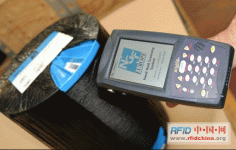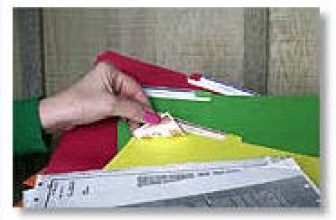
Fiberglass cable manufacturers use RFID to facilitate their customers
[ad_1]
The British glass fiber cable manufacturer NGF Europe (NGFE) has used RFID on its equipment for nearly four years, and now it is starting to read and write data for its tags, so that its customers can easily read the information in order to understand it in more detail. product.
NGF Europe company writes RFID data on the label attached to the fiberglass cable, so that the company can track its products, so that users in the automotive industry can also access the product information on the label.
At its manufacturing plant and cargo yard in St. Helens, England, NGFE has begun to use ISO 15693-compliant 13.56 MHz passive tags to track its cables during the manufacturing process. After the product is produced, it is transported to the automobile factory and made into a single timing (tooth) belt. Using RFID, you can provide visibility into products and inventory. By knowing exactly which cables are on each reel (even after those cables are rolled up), the company and its customers can check whether errors have occurred.

NGFE company uses a handheld reader to read the label attached to the spool. The label has been wrapped in a black plastic protective film (the black plastic package has been torn off as shown in the figure).
NGFE sells this cable to auto parts manufacturers. In the automotive industry, the use of suitable glass fibers is very important. Such wires vary in diameter, each has a different degree of curvature, and each arrangement also provides significantly different operating characteristics. When the wires are wound around the reel, it is difficult to distinguish each other from it. Once the wires are combined to form a timing (tooth) belt, then the wrong arrangement will result in defective products.
Four years before using the RFID solution, the staff of NGFE had been printing serial numbers with barcodes and pasting them on the spools. Scanning the barcode can verify the type of winding on a specific spool; at the same time, in order to prevent damage from ultraviolet rays and humidity, it must be packaged with more than 15 layers of black plastic, so the barcode inside the package is not visible and cannot be scanned.
Before the packaged spool was shipped, NGFE’s assistant product manager Peter Lai explained that, first read the bar code to confirm that it is the correct type, then wrap it in plastic, and then use the second layer of printed bar code to paste on the plastic package to indicate the type of spool . However, mistakes often occur in this way. The bar code on the package is often damaged or lost, and because the package is made of black plastic, the bar code itself is also black, so it is difficult to see clearly. The only way is to tear off the outer packaging and directly read the barcode inside. If RFID tags are used, on the contrary, the packaging can be read directly.
For the RFID system, NGFE has created its own Windows-based software system to store information. Workers of the company use Belgravium handheld readers to read the ID number of the 13.56 MHz tag. The operator first receives the list of product production plans that need to be produced, and then uses a handheld reader to read the ID code in the RFID tag in the employee’s ID card, thereby connecting personal work to the system to start work.
The display on the handheld reader requires the operator to scan the bar code on the manual and at the same time scan the bar code of the product that is about to be produced. At this point, the scanner verifies that the correct product is being used. If an incorrect product is used, the handheld reader will issue an error warning before production.
Once the cable is made, a Sato RFID printer writes the unique ID number and product number on the Innotech Resources RFID tag on the spool. NGFE company can use a handheld reader to read RFID tags, and the company’s software can be connected to the ID data information on the spool. In this way, the data history information of the spool can be established.
Once this process is complete, the spool is transported to the warehouse, weighed and wrapped in black plastic. This is, the cable will pass through the fixed RFID exit provided by Escort Memory Systems (EMS). The outlet reads the ID and product number of the RFID tag on the spool, and transmits it to the software together with the date and time stamp via a wired device. At this time, a self-adhesive label with a barcode ID number and text was printed out and pasted on the outside of the spool.
If it is found that the glass cable needs to be reworked during the packaging process, the spool can be moved to another place to rewind. Using the RFID system, employees can easily read the spool label and indicate that the spool is about to be rewinded, thereby generating a record that needs to be maintained in the background.
The RFID system put into operation in December 2006 not only saves employees’ working time, but also improves accuracy. Under this system, the company can know the entire history of a product from production to delivery, including product, storage, packaging and shipping.
Recently, the company decided to use an RFID system to provide customers with information about quality. This month, the company began writing additional data on the 1024-bit memory on the label for easy access by customers. In this way, the company can encode detailed specifications, such as weight (including kilograms and pounds, for different users), materials used, and test results, all of which can be read by customers. “Before, we provided customers with paper-based test certification,” Lai said. NGFE will also continue to provide paper documents, but customers with RFID readers can now also capture the test certification on the label itself. Some customers, Lai said, are already equipped with readers that read tags.
“In the future,” Lai said, “we are seeking to provide customers with an online database.” These companies will be able to use readers to read the spool labels and then access NGFE’s servers to learn more about a particular spool product.
[ad_2]




